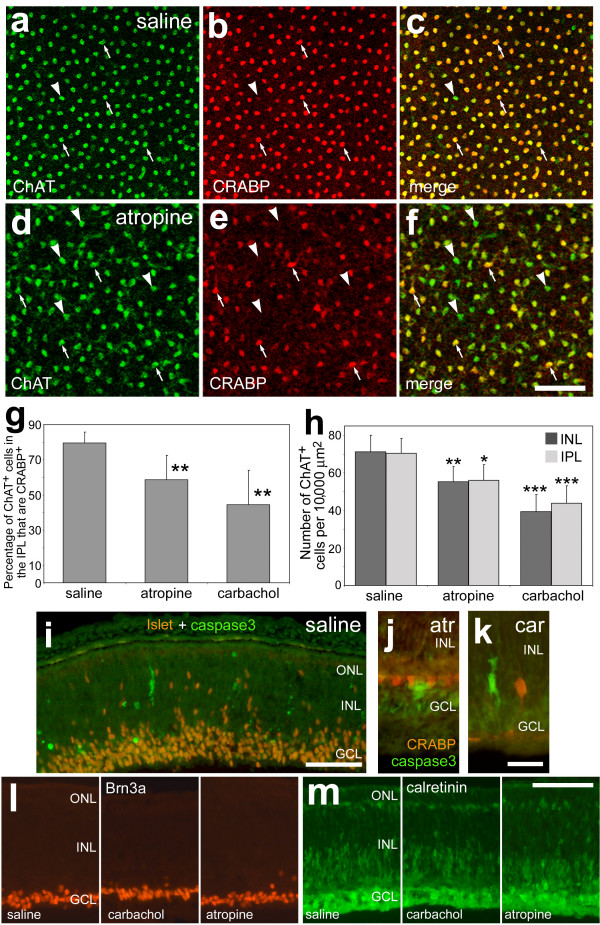Figure 6.
Muscarinic signaling influences the phenotype and density of cholinergic amacrine cells in the intact retina. Confocal microscopy was used to obtain optical sections of flat-mounted retinas labeled with antibodies to ChAT (green) and CRABP (red). Optical sections were obtained at the level of the developing IPL to visualize the type-II cells. Images are shown from retinas treated with saline (a-c) or atropine (d-f). The arrows indicate type-II cells that are immunoreactive for ChAT and CRABP, and the arrow-heads indicate cells that are immunoreactive for ChAT alone. Panel g is a histogram of the percentage of type-II cholinergic cells in the IPL that are immunoreactive for CRABP. Cells were counted from retinas that were treated with saline, atropine or carbachol. Panel h is a histogram of the number of ChAT-immunoreactive cells in the INL (type-I) and presumptive IPL (type-II) in retinas treated with saline, atropine or carbachol. The significance of difference was assayed by using ANOVA (p < 0.02) and a post-hoc Student's t-test (2 tailed, equal variance; *p < 0.05, **p < 0.025, ***p < 0.002). Panels i-m are representative microgrographs of retinal sections labeled for cleaved caspase 3 (green; i-k) and Islet1 (red; i) or CRABP (red; j and k), Brn3a (l), and calretinin (m). The calibration bar (50 μm) in panel f applies to panels a-f, the bar (50 μm) in i applies to i alone, the bar (10 μm) in k applies to j and k, and the bar (50 μm) in m applies to l and m. Abbreviations: INL – inner nuclear layer, IPL – inner plexiform layer, ChAT – choline acetyltransferase, CRABP – cellular retinoic acid binding protein.

